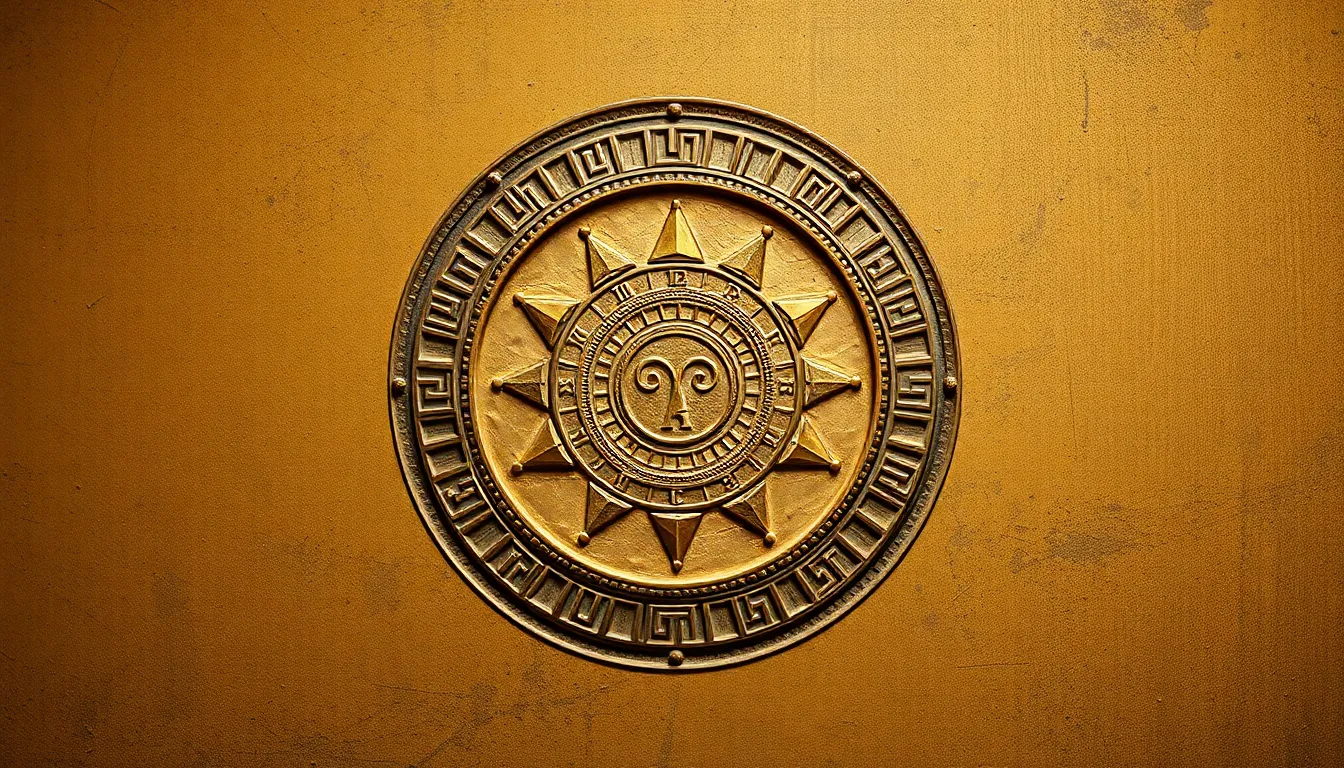The Myth of the Sacred Circle: Unity and Wholeness in Egyptian Lore
I. Introduction
The concept of the sacred circle is a profound symbol found in various cultures worldwide, representing unity, wholeness, and the cyclical nature of existence. In many traditions, circles symbolize the interconnectedness of life and the universe, embodying a sense of completeness.
In Egyptian lore, the sacred circle holds significant importance, reflecting the civilization’s deep spiritual beliefs and understanding of the cosmos. This article explores the myth of the sacred circle as a representation of unity and wholeness in ancient Egyptian beliefs, revealing how this concept permeated various aspects of their mythology and society.
II. Historical Context of Egyptian Mythology
Ancient Egyptian civilization, flourishing for over three millennia, was characterized by a complex system of spiritual beliefs that permeated every facet of life. The Egyptians viewed the world through a mythological lens, where gods and goddesses influenced the rhythms of nature, society, and governance.
Mythology played a crucial role in the daily lives of the Egyptians, providing explanations for natural phenomena and justifying the pharaoh’s divine right to rule. Key deities associated with the notion of wholeness and unity include:
- Ra: The sun god, symbolizing creation and the cycle of life.
- Osiris: The god of the afterlife, representing resurrection and renewal.
- Isis: The goddess of magic and motherhood, embodying unity in family and community.
- Horus: The sky god, signifying kingship and protection, often depicted as a unifying force.
III. The Symbolism of the Circle in Ancient Egypt
The circle serves as both a geometric and spiritual symbol within ancient Egyptian culture. It embodies the idea of continuity, eternity, and the cyclical nature of life and death. The Egyptians often associated the circle with the sun, which rises and sets each day, signifying the passage of time and the endless cycle of life.
Key connections between the circle and the Egyptian worldview include:
- The sun: The daily journey of Ra across the sky illustrates the circle of life.
- Life cycles: The cycles of nature, such as seasons and agricultural cycles, reflect the sacred circle.
- Eternity: The circular shape signifies the unending nature of existence and the afterlife.
Examples of circular motifs can be seen in Egyptian art and architecture, including:
- Circle-shaped amulets and jewelry.
- Architecture featuring rounded structures, such as temples and tombs.
- Artworks depicting circular solar symbols, often associated with Ra.
IV. Major Myths Featuring the Sacred Circle
Several prominent myths illustrate the concept of the sacred circle in Egyptian mythology:
- The story of Ra: Each day, Ra embarks on a journey through the Duat (underworld), symbolizing the cycle of life, death, and rebirth. His nightly battle against darkness represents the struggle to maintain balance in the universe.
- The cyclical nature of Osiris, Isis, and Horus: Osiris’s death and resurrection, along with his son Horus’s ascension, demonstrate the themes of renewal and continuity within the sacred circle of life.
- The annual flooding of the Nile: This natural phenomenon was seen as a divine blessing, symbolizing renewal and the cyclical nature of agriculture and sustenance for the Egyptian people.
V. Unity and Community in Egyptian Society
Central to Egyptian philosophy is the concept of Ma’at, which signifies truth, balance, order, and unity. Ma’at embodies the principle of social harmony, suggesting that the universe’s wholeness relies on each individual’s place within the community.
The sacred circle influenced social structures and governance by:
- Encouraging collaboration and mutual support among individuals.
- Promoting rituals that fostered community unity and collective identity.
- Reinforcing the pharaoh’s role as a unifying figure who maintained Ma’at.
Rituals and practices that emphasized communal wholeness include:
- Festivals celebrating the Nile’s flooding and agricultural cycles.
- Rituals honoring the gods and ancestors, fostering a sense of continuity.
- Community gatherings that reinforced social bonds and collective identity.
VI. The Sacred Circle in Egyptian Cosmology
Creation myths in Egyptian cosmology often depict the emergence of the cosmos from a state of chaos. The sacred circle symbolizes the universe’s balance, representing the harmony that must be maintained for existence to flourish.
The circle’s role in maintaining cosmic balance is illustrated through various myths, such as:
- The primordial waters of Nun, from which the first land emerged, forming a circular shape.
- The cyclical nature of celestial bodies, governed by the laws of Ma’at.
- Symbolic interpretations of the circle as a representation of the cyclical nature of existence and the universe.
VII. Legacy and Influence on Modern Spirituality
The concepts of unity and wholeness found in Egyptian mythology have left a lasting impact on modern spirituality. The sacred circle continues to resonate in various contemporary spiritual practices and beliefs, often representing the interconnectedness of all life.
Comparisons can be drawn between the sacred circle in Egyptian lore and similar concepts in other cultures, including:
- The Native American medicine wheel, symbolizing the cycles of life and nature.
- The Celtic knot, representing interconnectedness and eternity.
- Eastern philosophies, such as Buddhism, which emphasize cycles of birth, death, and rebirth.
VIII. Conclusion
The sacred circle in Egyptian lore encapsulates the civilization’s profound understanding of unity and wholeness. It is a symbol that transcends time, reflecting the interconnectedness of life, the cycles of nature, and the importance of community.
In today’s world, the relevance of these concepts continues to resonate as humanity seeks balance and connection amidst chaos. The enduring myth of the sacred circle remains a powerful reminder of our shared existence and the eternal cycles that bind us all.




